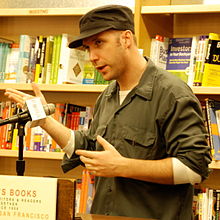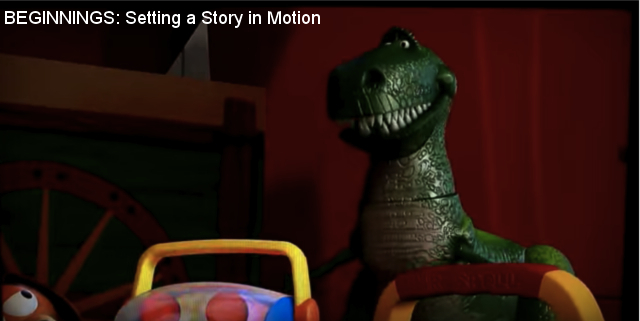For months I’ve been trying to find the right opening for the novel I started in 2013, and I think I’ve got it. Finally. For my breakthrough, I owe a huge thank you to screenwriter Michael Arndt.
Last month good friend and author Kristin Swenson met Arndt at the Austin Film Festival & Conference, and afterward sent me the link to a Disney/Pixar animated short that Arndt wrote: “Beginnings: Setting a Story in Motion.” (According to this site, the short originally appeared as a bonus feature on Toy Story 3’s Blue-ray version.) Enthralled, I watched it multiple times. Not only did watching help me write an opening that works, it helped me understand why some stories are good and others blockbuster-great. Only 8 minutes long, this short packs a career’s worth of screenwriting wisdom.
But there’s a catch. Novel-writing and screenwriting aren’t the same beast. Arndt tells us to begin by establishing the protagonist and his/her defining passion; inotherwords, start with the “ordinary world” beloved by Hollywood’s devotees of mythic structure. For film, this works. For novels, hmmm… not always.
Movie viewers settle into cushy chairs for a two-hour commitment, give or take 30 minutes. Readers commit to much more—hours, days, possibly a week’s worth of time engrossed in a fictional universe. A novelist who opens with the ordinary risks losing readers in backstory before they’ve made a commitment to the long haul, and might do better to begin with a scene that sets up the emotional arc of the story. An inciting incident. Later when the hero has reason to think about the world from which she’s come, writers can always provide backstory. By that time, if we’ve hooked our readers, they’ll be curious for more.

But despite film vs. fiction differences, storytelling is storytelling and novelists have a lot to learn from screenwriters. Arndt’s little gem purports to be about beginnings, but it’s also about structure and pacing and twists and turns and why some Disney/Pixar movies are insanely successful and… I could go on and on. I’m enormously grateful to Kristin for linking me to this clip. Now I can enjoy the upcoming Thanksgiving and holiday seasons with peace of mind, believing that at least for the moment, I’ve got my manuscript where it needs to be. Pfew.
And over the holidays, I might just settle into a cushy chair with a bowl of popcorn and a little Toy Story 3…


This is an incredibly insightful, interesting, and helpful article. Ironically, I was just working on the structure of my novel last night. I am definitely going back to this video again. Thank you!
So glad you found it helpful. Now that you’ve watched the video, you can see that it’s really about structure, not just about beginnings (his title is a bit of a misnomer), but hey — it helped me with my beginning, so I’m not complaining.
This video is really terrific, and it does help me to see I’ve begun my novel well. Whew! This book by Syd Field helped me, and it reiterates the Pixar beginnings approach, and then outlines what to do with part II and III.
http://www.amazon.com/Screenplay-Foundations-Screenwriting-Syd-Field/dp/0385339038
Karen – Thank you for the link to Field’s book. I skimmed through the section Amazon has posted online, and already I can see that I’ll enjoy reading this. One of Field’s lines is: “[It] soon became clear that everyone had a story to tell. They just didn’t know how to tell it.”
Well, isn’t that just sooooo true? I wish I’d learned some of these techniques when I was younger, but hey–better late than never. Good stuff here. Very good! Thanks again.